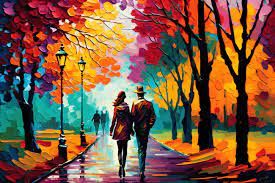Painting is more than just applying pigments to a surface—it’s a profound form of expression that has captivated human imagination for thousands of years. Laga soo bilaabo abstracte schilderijen earliest cave paintings to the latest digital creations, painting continues to evolve and inspire. This article explores the rich history, diverse techniques, and contemporary developments in painting.
A Historical Overview
The origins of painting can be traced back to prehistoric times. The famous cave paintings in Lascaux, France, dating back around 17,000 sano, offer a glimpse into the lives of early humans. These early artists used natural pigments to create vivid depictions of animals, illustrating not just their surroundings but their relationship with nature.
As civilizations advanced, painting became a central element of cultural and religious expression. Ancient Egyptians used hieroglyphs and vivid colors to tell stories of gods and pharaohs, while Greek and Roman artists explored naturalism and human emotion. The Renaissance, beginning in the 14th century, marked a significant shift with artists like Leonardo da Vinci, Michelangelo, and Raphael pushing the boundaries of realism and perspective.
The 19th and 20th centuries saw a series of revolutionary movements. Impressionists like Claude Monet broke away from traditional techniques to capture fleeting moments and the effects of light. Modernism, led by figures such as Pablo Picasso, introduced abstraction and challenged traditional notions of form and representation.
Techniques and Styles
Painting techniques have evolved considerably, reflecting changes in artistic goals and technological advancements. Traditional methods like oil painting, watercolor, and fresco each offer unique properties and possibilities.
- Oil Painting: Developed during the Renaissance, oil paint allows for rich textures and complex color blending. Artists like Rembrandt and Van Gogh used it to create works with deep emotional resonance.
- Watercolor: Known for its fluidity and transparency, watercolor painting involves delicate layering of pigments on paper. It is favored for its ability to capture the essence of light and atmosphere.
- Fresco: This ancient technique involves applying pigments onto wet plaster, resulting in durable and vibrant murals. It was widely used in medieval and Renaissance Europe.
In contemporary art, new techniques have emerged, including digital painting, where artists use software to create works that push the boundaries of traditional media. Mixed media combines different materials and methods to produce unique textures and effects.
The Role of Painting Today
In the 21st century, painting remains a vital form of artistic expression, often intersecting with technology and new media. The digital age has expanded the possibilities for artists, enabling them to experiment with virtual reality, Xaqiiqda Abaalmarinta, and interactive installations.
Painting also serves as a medium for social and political commentary. Artists use their work to address pressing issues, challenge conventions, and provoke thought. From street art to gallery exhibitions, painting continues to be a powerful tool for communication and reflection.
Gabagabo
Painting is a dynamic and evolving art form with a rich history and a vibrant present. Whether through the meticulous detail of a Renaissance masterpiece or the bold strokes of modern abstraction, painting offers a unique window into the human experience. As technology and artistic practices continue to advance, the future of painting promises to be as exciting and varied as its past.

